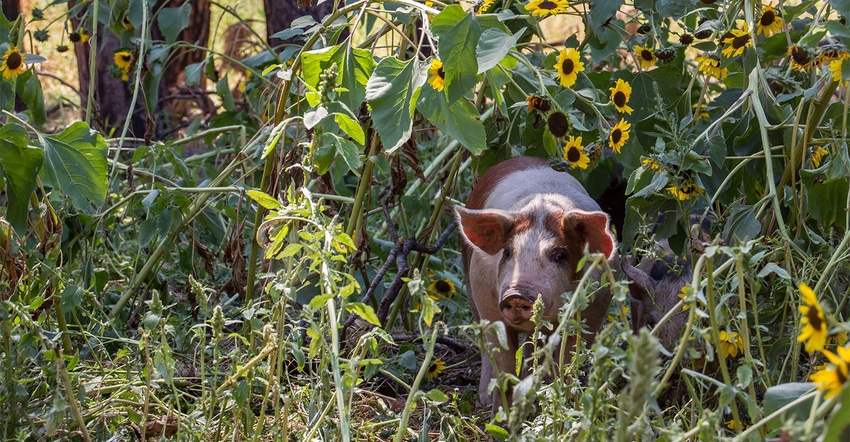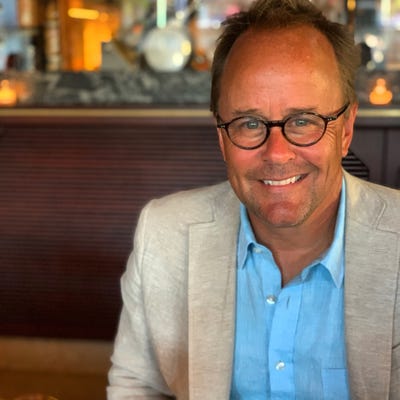
Marketing. Technology solutions that offer alternatives to expensive third-party certifications. Commercialization first. These were just some of the strategies aimed at broadening the regenerative agriculture movement that industry leaders explored during a panel discussion at Natural Products Expo West in March.
"It's miraculous what you can get people to do in terms of behavior change with good marketing. I see vegan 25-year-olds putting collagen in their smoothies. That's miracle marketing," said Greg Horn, managing director and partner at William Hood & Company, an investment banking firm focused on health and wellness consumer categories. "Can we get some collagen marketers over here? Because that's what we need."
Regenerative agriculture, a term without an agreed-upon and codified definition, offers people and the planet a diversity of agricultural pursuits and consumer choices that can lead to a more sustainable food system. But while many in-the-field practices that could be described as regenerative are thousands of years old, the commercial movement remains nascent. And for it to root, flourish and make consequential differences, leaders said, the movement needs to wrestle with some of the issues that are holding it back.
For Horn, much of the work hinges on storytelling and education. It's the messaging, he said, that stokes consumer demand and ultimately compels farmers to engage with regenerative agriculture. Spiking consumer demand, he said, leads to higher prices and more reliable markets for farmers.
"This idea that these things matter is something," Horn said. "My wish for this whole segment is they get some great marketers in it, and marketing that tells the story, that tells people why they should buy it at all, why they should care."
After all, the regenerative agriculture story is not an easy one to summarize in a slogan or on a label. For one thing, unlike organic, it doesn't come with an industry-wide acceptance about what it means. Beyond that challenge, regenerative incorporates a range of different activities, from inviting livestock into crop farming to planting regenerative cover crops. But making connections for consumers between some of these practices and sustainability requires robust and clever marketing. To date, Horn said, efforts have failed to powerfully convey the importance of choosing regenerative both for farmers and consumers.
Another issue for Horn: intermediaries. The number of people in the food supply chain who gain profit for their roles contributes immensely toward mounting expenses for foods among consumers. Minus so many middlemen, consumer prices would drop, and demand would rise.
Blockchain technology, which could ensure honesty throughout the food supply chain, could eliminate some of those pricey intermediaries, Horn said. In addition, a powerful blockchain system could mitigate the need for third-party certifications, which are designed to make sure that, for example, food labeled as organic followed all of the rules and deserves the designation. Today, a balance of farmers' expenses surrounding many third-party certifications revolves around fees that farmers pay to the certifiers. But a blockchain system, Horn said, could prove the farm's and brand's alignment with key sustainability principles and practices, without having to pay third parties for their oversight and management.
Regenerative certification too expensive for farmers
The expenses surrounding third-party certifications have kept Tim McCollum, Founder and CEO of chocolate brand Beyond Good, out of the regenerative certification game.
"Certifications seem to have always started in the Northern Hemisphere. The flaw, though, is the problems need to be solved locally," McCollum said. "You're not going to solve a problem of poverty for a small cocoa farmer if you are sitting behind a computer in Zurich."
In his supply chain, he said, 60% of the farmers are illiterate. Engaging with the rules and regulations surrounding regenerative certifications didn't make sense for the brand. By the time the price boosts that can come with certified crops reached the farmers, it wasn't enough to make a big difference to the bottom line, and wasn't worth it, McCollum said. Notably, Beyond Good chocolate is made with organic cocoa beans, organic cocoa butter and organic cane sugar.
Regardless, prioritizing farmers is imperative.
"It's possible we move to farmer income first, and then regenerative agriculture. The commercial incentive must be there for it to really be sustainable," McCollum said.
For him, success in regenerative agriculture will hinge on what's in it for farmers, financially. Most farmers in the world barely scrape by. For them to embrace new farming practices, experiment with different crops and potentially engage with certification protocols, they will have to get paid.
Beyond Good was lucky, with its farms in Madagascar. For the company's single-varietal chocolate to thrive, the trees need shade canopy, which includes things like avocado, mango, citrus, coconut and papaya. After the company began creating groves that would support cocoa plants, "We found five lemurs living in the cocoa forest, all because farmers regenerated a forest that five years ago was nothing, just fallow grassland. Regenerative is scalable, as long as resources are there for the farmer," McCollum said.
Regenerative agriculture stems from indigenous practices
Sarela Herrada, co-founder of food and ingredients brand Simpli who works extensively in South America, said that following "indigenous practices that have been around for thousands of years" is an important step, as those practices often embody regenerative agriculture.
Simpli, which works with small farmers in Peru, Paraguay, Brazil, Argentina, Ukraine and Greece, understands the importance of education, Herrada said. The team offers guidance about how to run farming as a business, and how to commercialize products. They also make sure the potential farmers understand the challenges ahead: Do they really want to grow crops? If the answer remains yes, then the Simpli teams helps craft sustainable business models.
Simpli products are Regenerative Organic Certified (ROC), and the company helps build infrastructure that leads to certification with as little pain as possible to farmers.
"There is a journey behind the scenes," Herrada said. "For us, it is working to make sure they have access to capital. Can we create accessibility for them for export markets, so they get top dollar? This is for the hero crop (such as quinoa) as well as the regenerative crops (like cover crops that get planted to invigorate the soil)."
For Herrada, ROC certification makes a difference. Consumers are looking for it, she said, and they also want authenticity, they want connections to farmers.
One organization that helps make connections between land and consumers is Zero Footprint. Its executive director, chef Anthony Myint, said Zero Footprint always remains fixed on the "next acre" that can turn regenerative. His organization grants Zero Footprint seals to products that are actively turning acres into regenerative farmland and taking carbon out of the atmosphere. The nonprofit has built a network that allows consumers and businesses to connect directly back to local regenerative agricultural products, he said.
"I spent many years running a restaurant and championing regenerative agriculture. After a few years, I realized there wasn't enough supply," Myint said. "Now, we meet consumers where they are, and meet farmers where they are. We bring everybody together."
Read more about:
Natural Products ExpoAbout the Author(s)
You May Also Like





